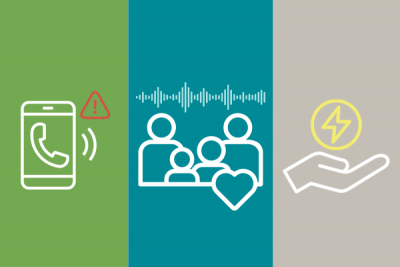Communication Plan
opt-in for emergency alerts
It is critically important to stay informed when any emergency strikes. Public agencies are typically disseminating information throughout an emergency. The best step you can take is to opt-in to receive emergency alerts. Visit PublicAlerts.org to sign up for emergency notifications via text, phone or e-mail. You’ll want to check that your cell phone has Wireless Emergency Alerts enabled. To keep up on hazardous weather conditions, you can visit TripCheck.com or go to NOAA Weather Radio which delivers official Weather Service warnings, watches, forecast, and other hazard information based on location.
family communication plan
Make and practice a family communication plan. You may not be with your family members during an emergency. You need a plan that outlines how you will get to a safe place and how family members can contact and/or locate one another during an emergency. Include a family contact list with at least one out-of town contact who may be able to reach others more easily in an emergency. Practice your plan with family members. Fill out the family locator form provided at tvfr.com by our friends at Tualatin Fire and Rescue.
communication without power
Prepare to communicate without power. Your emergency supplies should include a battery-powered or hand crank radio so you can receive emergency information even when the power is out. Keep extra batteries and cell phone chargers on hand, and get in the habit of keeping cell phones, laptops, and other devices fully charged. To conserve battery power, switch devices to power-saving mode, dim the brightness of screens, close apps, and turn them off when not in use. Limit calls or texts during an emergency. Using text messages or e-mail instead of calling conserves cell phone batteries and reduces congestion on cellular networks.





